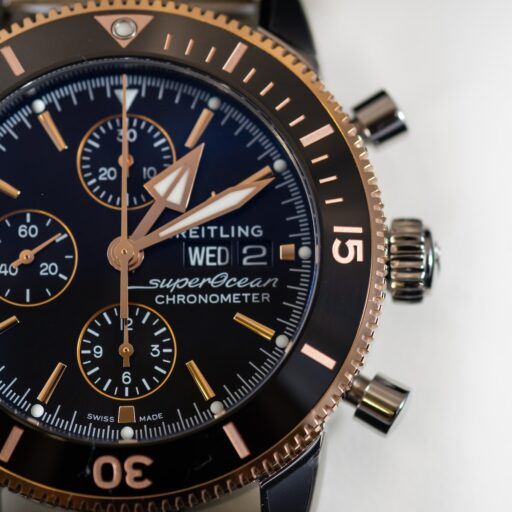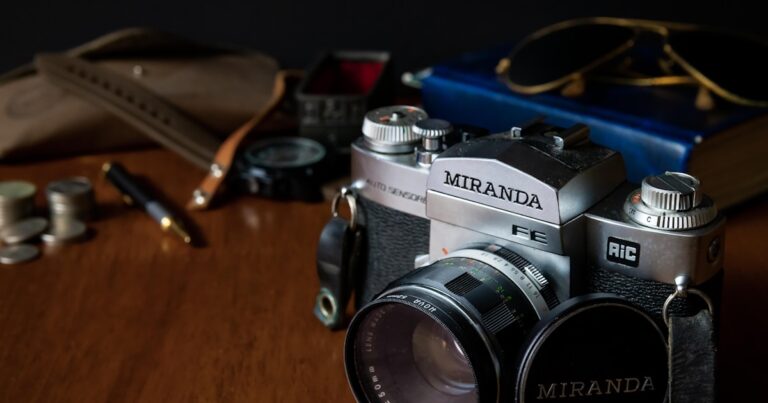Support our educational content for free when you purchase through links on our site. Learn more
When Did Wristwatches Get Popular? ⌚️
Ever wonder why you’re checking the time on your wrist instead of your pocket? The story of the wristwatch isn’t just about telling time; it’s a fascinating journey from a women’s fashion accessory to a global symbol of style and technology. In this comprehensive guide, we’ll explore the key moments that propelled the wristwatch from a niche item to a must-have accessory, revealing surprising twists and turns along the way. We’ll uncover the surprising role of World War I, the game-changing quartz revolution, and the rise of smartwatches. Ready to dive into the captivating history of the wristwatch?
Key Takeaways:
- World War I was a pivotal moment: The war’s demand for quick and easy timekeeping transformed the wristwatch from a fashion accessory into a practical tool for soldiers, leading to its widespread adoption.
- The quartz revolution democratized accuracy: The invention of the quartz watch made precise timekeeping affordable and accessible to everyone, dramatically increasing wristwatch ownership.
- Smartwatches represent the latest evolution: These devices seamlessly blend traditional timekeeping with cutting-edge technology, creating a new chapter in the wristwatch’s ongoing story.
- The wristwatch’s journey reflects broader societal shifts: From fashion statement to military necessity to technological marvel, the wristwatch’s evolution mirrors the changing times.
Want to explore the world of wristwatches further? Check out our curated selections of Men’s Watches, Affordable Watches, and Luxury Watch Brands.
Table of Contents
The Rise of Wristwatches: From Military Tool to Everyday Accessory
From Pocket to Wrist: The Evolution of Timekeeping
- The Early Days of Wristwatches: A Fashion Statement?
- World War I: The Wristwatch’s Moment of Glory
- The Post-War Boom: Wristwatches for Everyone
- The Quartz Revolution: Affordable Accuracy
- The Digital Age: Smartwatches and Beyond
Understanding the Mechanics: Key Innovations in Watchmaking
The Impact of Mass Production on Wristwatch Popularity
Choosing the Right Wristwatch: A Guide for Today’s Buyer
Wristwatch Styles and Trends Throughout History
Famous Wristwatches and Their Stories
The Future of Wristwatches: What’s Next?
Quick Tips and Facts ⏱️
Let’s dive straight into some fascinating facts about the history of wristwatches! Did you know that while many associate wristwatches with modern times, their journey is far richer and more intriguing than you might think? 🤔
- Early Adoption: Contrary to popular belief, wristwatches weren’t initially embraced by men. They were initially considered more of a women’s accessory! 💅
- Military Influence: World War I played a pivotal role in popularizing wristwatches among men. The need for quick and accurate timekeeping on the battlefield made them indispensable. 🪖
- The Quartz Revolution: The invention of the quartz watch in the 1960s drastically changed the watch industry, making accurate timekeeping more affordable and accessible than ever before. 💥
- Beyond Time: Today, smartwatches seamlessly blend technology and timekeeping, offering a plethora of features beyond simply telling the time. 🤯
We’ll explore these points and more in detail throughout this article. Get ready for a captivating journey through time!
The Rise of Wristwatches: From Military Tool to Everyday Accessory ⌚
The story of the wristwatch’s rise to prominence is a fascinating blend of technological innovation, military necessity, and evolving social trends. While some sources claim the first wristwatch was created as early as 1810 by Abraham-Louis Breguet for Caroline Murat, Queen of Naples https://en.wikipedia.org/wiki/History_of_watches, it wasn’t until the early 20th century that they truly began to gain traction. Learn more about who invented the wristwatch in 1904 at https://www.watchbrands.org/who-invented-the-wristwatch-in-1904/.
Early Days: A Fashion Statement?
Initially, wristwatches were primarily seen as a fashion accessory, particularly among women. Elegant designs and delicate straps made them a stylish addition to any ensemble. However, their practicality was slowly starting to be recognized.
World War I: The Turning Point
The outbreak of World War I proved to be a watershed moment. Soldiers in the trenches needed a way to quickly and discreetly check the time, and the wristwatch proved to be the perfect solution. Its compact size and ease of access made it far superior to the cumbersome pocket watch. This military adoption was crucial in shifting public perception. The Atlantic highlights this shift, stating that “The telephone and signal service, which play important parts in modern warfare, have made the wearing of watches by soldiers obligatory,” https://www.theatlantic.com/international/archive/2015/05/history-wristwatch-apple-watch/391424/.
The Post-War Boom
Following the war, the wristwatch’s popularity exploded. Men, having experienced its practicality firsthand, continued to wear them, and the watch quickly transitioned from a military necessity to a staple accessory for everyday life. This period saw a surge in watch manufacturing, with brands like Rolex and Omega solidifying their positions as industry leaders. Check out our Watch Brand Comparisons section for more details on these iconic brands.
The Quartz Revolution: Accuracy for All
The invention of the quartz watch in the 1960s marked another significant turning point. Quartz watches offered unparalleled accuracy at a fraction of the cost of their mechanical counterparts. This led to a dramatic shift in the market, making accurate timekeeping accessible to a much wider audience. The “quartz crisis” of the 1970s and 80s saw many traditional mechanical watchmakers struggle to adapt, but ultimately, the industry innovated and thrived.
The Digital Age: Smartwatches and Beyond
Today, we’re in the midst of another revolution, with smartwatches leading the charge. These devices seamlessly blend traditional timekeeping with cutting-edge technology, offering features like fitness tracking, communication, and even contactless payments. Explore our Guide to Buying Watches for insights into the latest smartwatch trends. This evolution continues to shape the future of wristwatches, blurring the lines between fashion accessory and technological marvel. What will the next chapter hold? Only time will tell! 😉
From Pocket to Wrist: The Evolution of Timekeeping
The wristwatch’s journey is intrinsically linked to the broader evolution of timekeeping. Before wristwatches, pocket watches reigned supreme, but their limitations paved the way for a more convenient and practical alternative.
1. The Early Days of Wristwatches: A Fashion Statement?
As mentioned earlier, early wristwatches were primarily worn by women, often as jewelry. This is a fascinating contrast to their later adoption by men as a symbol of practicality and masculinity.
2. World War I: The Wristwatch’s Moment of Glory
The impact of World War I on the wristwatch’s popularity cannot be overstated. The need for soldiers to quickly and easily access time information made the wristwatch indispensable. This period saw a significant shift in both design and functionality, with a focus on durability and practicality.
3. The Post-War Boom: Wristwatches for Everyone
The post-war era witnessed a massive increase in wristwatch production and sales. The watch transitioned from a niche item to a mainstream accessory, becoming increasingly affordable and accessible to a wider range of consumers.
4. The Quartz Revolution: Affordable Accuracy
The introduction of quartz technology revolutionized the watch industry, making highly accurate timekeeping affordable for everyone. This led to a dramatic increase in wristwatch ownership and a shift away from traditional mechanical movements.
5. The Digital Age: Smartwatches and Beyond
The rise of smartwatches represents the latest chapter in the evolution of wrist-worn timekeeping. These devices combine traditional watch functions with advanced technology, offering a wide range of features beyond simple timekeeping. This evolution continues to shape the future of the wristwatch.
Understanding the Mechanics: Key Innovations in Watchmaking
The evolution of the wristwatch is inextricably linked to advancements in watchmaking technology. Several key innovations played crucial roles in shaping the wristwatch as we know it.
- Balance Spring: The invention of the balance spring in the 17th century significantly improved the accuracy of mechanical watches. This tiny component regulates the oscillation of the balance wheel, ensuring consistent timekeeping. https://en.wikipedia.org/wiki/History_of_watches
- Lever Escapement: The lever escapement, a mechanism that releases the energy stored in the mainspring in controlled bursts, further enhanced the accuracy and efficiency of mechanical watches.
- Temperature Compensation: Early watches were highly susceptible to temperature fluctuations, affecting their accuracy. The development of temperature compensation mechanisms significantly improved their reliability in varying conditions.
- Self-Winding Mechanisms: The invention of automatic or self-winding mechanisms eliminated the need for manual winding, adding to the convenience of wristwatches. This innovation was a game-changer, making watches more user-friendly.
The Impact of Mass Production on Wristwatch Popularity
Mass production played a pivotal role in making wristwatches accessible to the masses. The ability to manufacture watches efficiently and at scale dramatically reduced their cost, making them affordable for a much wider segment of the population. This affordability was a key factor in their widespread adoption. The Waltham Watch Company, starting in 1851, is a prime example of this shift towards mass production using interchangeable parts https://en.wikipedia.org/wiki/History_of_watches.
Choosing the Right Wristwatch: A Guide for Today’s Buyer
With the vast array of wristwatches available today, choosing the right one can feel overwhelming. Here’s a guide to help you navigate the options:
- Consider your lifestyle: Do you need a rugged watch for outdoor activities, a sleek watch for formal occasions, or a smart watch for everyday use?
- Think about your budget: Wristwatches range from affordable to extremely expensive. Set a realistic budget before you start shopping.
- Choose the right movement: Do you prefer a mechanical watch for its craftsmanship or a quartz watch for its accuracy and affordability?
- Select the right features: Consider features like water resistance, chronograph functions, and date displays.
- Don’t forget the aesthetics: Choose a style and design that reflects your personal taste.
For more detailed guidance, check out our Men’s Watches and Affordable Watches sections. We also have a comprehensive guide on Luxury Watch Brands for those seeking a high-end timepiece.
Wristwatch Styles and Trends Throughout History
Wristwatch styles have evolved dramatically throughout history, reflecting changing fashion trends and technological advancements. From the delicate designs of early women’s watches to the rugged functionality of military watches and the sleek sophistication of modern timepieces, the wristwatch has consistently adapted to the times. We’ve seen everything from Art Deco elegance to minimalist designs, and the trends continue to evolve.
Famous Wristwatches and Their Stories
Many famous wristwatches have captivating stories behind them. These iconic timepieces often represent milestones in watchmaking history or are associated with significant historical events or influential figures. For instance, the Rolex Oyster Perpetual, known for its water resistance, played a role in the exploration of the deep sea. The Omega Speedmaster, worn on the moon, is another example of a watch with a rich history and cultural significance.
The Future of Wristwatches: What’s Next?
The future of wristwatches is likely to be shaped by continued technological advancements and evolving consumer preferences. Smartwatches are poised to play an increasingly significant role, offering ever-more sophisticated features and seamless integration with other devices. However, traditional mechanical watches are also likely to retain their appeal, representing a blend of craftsmanship and heritage. The future likely holds a diverse range of options, catering to a wide range of tastes and needs. What do you think the future holds for wristwatches? Let us know in the comments!
Conclusion
From humble beginnings as a women’s fashion accessory to its current status as a ubiquitous symbol of style and technology, the wristwatch’s journey is a testament to human ingenuity and evolving societal needs. The military’s adoption during World War I was a pivotal moment, transforming the wristwatch from a novelty into a practical tool, and subsequently, a coveted accessory. The quartz revolution democratized accurate timekeeping, while the rise of smartwatches promises to further integrate timekeeping with our increasingly digital lives. The future of the wristwatch remains bright, with a diverse range of options catering to every taste and need. We’ve explored the key milestones, from the early mechanical marvels to the sophisticated smartwatches of today, and hopefully, answered your burning questions about when and why wristwatches became so popular. Remember, the story of the wristwatch is far from over – it’s a story that continues to unfold with each new innovation.
Recommended Links
Want to delve deeper into the world of wristwatches? Here are some resources:
👉 Shop Popular Watch Brands:
- Rolex: Amazon | Rolex Official Website
- Omega: Amazon | Omega Official Website
- Seiko: Amazon | Seiko Official Website
- Citizen: Amazon | Citizen Official Website
Books on Watch History:
- A History of the Wristwatch: A comprehensive exploration of the wristwatch’s evolution.
- Wristwatches: A Collector’s Guide: A detailed guide for watch enthusiasts.
FAQ
Here are some frequently asked questions about the history and popularity of wristwatches:
What are the key factors that contributed to the widespread adoption of wristwatches in the early 20th century?
Several factors contributed to the widespread adoption of wristwatches in the early 20th century:
- Increased Accuracy: Advancements in watchmaking technology led to more accurate timekeeping, making wristwatches more reliable.
- Military Adoption: World War I played a crucial role, as soldiers found wristwatches more practical than pocket watches in the field.
- Mass Production: The ability to mass-produce watches made them more affordable and accessible to a wider range of consumers.
- Changing Social Norms: Wristwatches became increasingly fashionable, leading to their adoption by both men and women.
How did World War I influence the popularity of wristwatches among soldiers and civilians alike?
World War I significantly boosted the popularity of wristwatches. Soldiers found them far more practical than pocket watches in the trenches, leading to their widespread adoption by military personnel. This military association transferred to civilian life, with many men continuing to wear wristwatches after the war. The war’s impact on the watch industry is well documented https://www.theatlantic.com/international/archive/2015/05/history-wristwatch-apple-watch/391424/.
What role did luxury watch brands play in making wristwatches a status symbol in the mid-20th century?
Luxury watch brands played a significant role in establishing the wristwatch as a status symbol. Brands like Rolex, Omega, and Patek Philippe crafted exquisite timepieces that became associated with wealth, prestige, and success. These brands’ marketing strategies emphasized craftsmanship, quality, and exclusivity, further solidifying the wristwatch’s status as a luxury item.
How have advancements in technology and materials impacted the design and functionality of wristwatches over the years?
Advancements in technology and materials have profoundly impacted wristwatch design and functionality. The invention of the quartz movement revolutionized accuracy and affordability. New materials like sapphire crystal and titanium have improved durability and water resistance. Smartwatch technology has integrated advanced features like fitness tracking, communication, and contactless payments.
What are some of the most significant technological advancements in wristwatch history?
Some of the most significant technological advancements include:
- The balance spring: This tiny component revolutionized the accuracy of mechanical watches.
- The lever escapement: This mechanism further enhanced accuracy and efficiency.
- Self-winding mechanisms: These eliminated the need for manual winding, adding to convenience.
- The quartz movement: This technology drastically improved accuracy and affordability.
Reference Links
- Wikipedia: History of Watches
- Seiko Museum: Relation between Wristwatches and the Times
- The Atlantic: A Brief History of the Wristwatch
- Rolex Official Website
- Omega Official Website
- Seiko Official Website
- Citizen Official Website





